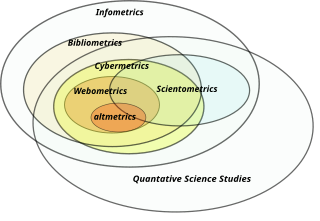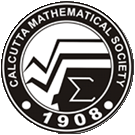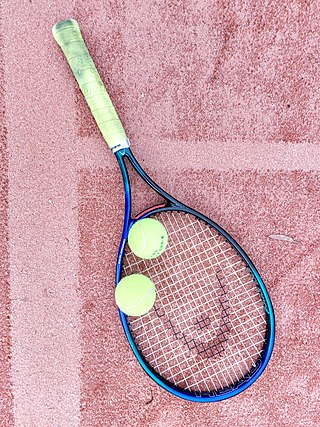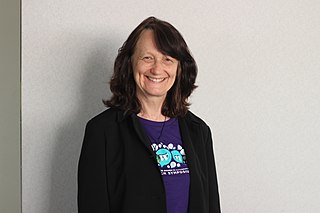Related Research Articles

Computer science is the study of computation, information, and automation. Computer science spans theoretical disciplines to applied disciplines. Though more often considered an academic discipline, computer science is closely related to computer programming.

Interdisciplinarity or interdisciplinary studies involves the combination of multiple academic disciplines into one activity. It draws knowledge from several other fields like sociology, anthropology, psychology, economics, etc. It is about creating something by thinking across boundaries. It is related to an interdiscipline or an interdisciplinary field, which is an organizational unit that crosses traditional boundaries between academic disciplines or schools of thought, as new needs and professions emerge. Large engineering teams are usually interdisciplinary, as a power station or mobile phone or other project requires the melding of several specialties. However, the term "interdisciplinary" is sometimes confined to academic settings.

Information science is an academic field which is primarily concerned with analysis, collection, classification, manipulation, storage, retrieval, movement, dissemination, and protection of information. Practitioners within and outside the field study the application and the usage of knowledge in organizations in addition to the interaction between people, organizations, and any existing information systems with the aim of creating, replacing, improving, or understanding the information systems.
Computational archaeology describes computer-based analytical methods for the study of long-term human behaviour and behavioural evolution. As with other sub-disciplines that have prefixed 'computational' to their name, the term is reserved for methods that could not realistically be performed without the aid of a computer.

Theoretical computer science (TCS) is a subset of general computer science and mathematics that focuses on mathematical aspects of computer science such as the theory of computation, formal language theory, the lambda calculus and type theory.
The Department of Computer Science is a department of the Faculty of Mathematics, Physics and Informatics at the Comenius University in Bratislava, the capital of Slovakia. It is headed by Prof. RNDr. Branislav Rovan, Phd.

The Courant Institute of Mathematical Sciences is the mathematics research school of New York University (NYU). Founded in 1935, it is named after Richard Courant, one of the founders of the Courant Institute and also a mathematics professor at New York University from 1936 to 1972, and serves as a center for research and advanced training in computer science and mathematics. It is located on Gould Plaza next to the Stern School of Business and the economics department of the College of Arts and Science.

The École nationale supérieure d'informatique et de mathématiques appliquées, or Ensimag, is a prestigious French Grande École located in Grenoble, France. Ensimag is part of the Institut polytechnique de Grenoble. The school is one of the top French engineering institutions and specializes in computer science, applied mathematics and telecommunications.

The Indian Association for Medical Informatics (IAMI) is a professional society that plays a role in promoting and furthering the application of informatics in the fields of healthcare, bioscience and medicine in India. It was established in Feb 1993 by Prof. Dr. Nanduri Gajanana Rao BSc, MBBS, MNAMS, PhD at Nizam's Institute of Medical Sciences, Hyderabad. Registered at District Registrar of Societies on 18 Sep 1993 - Regn No. 3774/93

Kantilal Vardichand "Kanti" Mardia is an Indian-British statistician specialising in directional statistics, multivariate analysis, geostatistics, statistical bioinformatics and statistical shape analysis. He was born in Sirohi, Rajasthan, India in a Jain family and now resides and works in Leeds. He is known for his series of tests of multivariate normality based measures of multivariate skewness and kurtosis as well as work on the statistical measures of shape.
Edward ("Ted") Hance Shortliffe is a Canadian-born American biomedical informatician, physician, and computer scientist. Shortliffe is a pioneer in the use of artificial intelligence in medicine. He was the principal developer of the clinical expert system MYCIN, one of the first rule-based artificial intelligence expert systems, which obtained clinical data interactively from a physician user and was used to diagnose and recommend treatment for severe infections. While never used in practice, its performance was shown to be comparable to and sometimes more accurate than that of Stanford infectious disease faculty. This spurred the development of a wide range of activity in the development of rule-based expert systems, knowledge representation, belief nets and other areas, and its design greatly influenced the subsequent development of computing in medicine.
Renfrey Burnard (Ren) Potts AO (1925–2005) was an Australian mathematician and is notable for the Potts model and his achievements in: operations research, especially networks; transportation science, car-following and road traffic; Ising-type models in mathematical physics; difference equations; and robotics. He was interested in computing from the early days of the computing revolution and oversaw the first computer purchases at the University of Adelaide.
The following outline is provided as an overview of and topical guide to information science:
Informatics is the study of computational systems. According to the ACM Europe Council and Informatics Europe, informatics is synonymous with computer science and computing as a profession, in which the central notion is transformation of information. In some cases, the term "informatics" may also be used with different meanings, e.g. in the context of social computing, or in context of library science.
Environmental informatics is the science of information applied to environmental science. As such, it provides the information processing and communication infrastructure to the interdisciplinary field of environmental sciences aiming at data, information and knowledge integration, the application of computational intelligence to environmental data as well as the identification of environmental impacts of information technology. The UK Natural Environment Research Council defines environmental informatics as the "research and system development focusing on the environmental sciences relating to the creation, collection, storage, processing, modelling, interpretation, display and dissemination of data and information." Kostas Karatzas defined environmental informatics as the "creation of a new 'knowledge-paradigm' towards serving environmental management needs." Karatzas argued further that environmental informatics "is an integrator of science, methods and techniques and not just the result of using information and software technology methods and tools for serving environmental engineering needs."

The Calcutta Mathematical Society (CalMathSoc) is an association of professional mathematicians dedicated to the interests of mathematical research and education in India. The Society has its head office located at Kolkata, India.

Sports engineering is a sub-discipline of engineering that applies math and science to develop technology, equipment, and other resources as they pertain to sport.

Ami Elizabeth Radunskaya is an American mathematician and musician. She is a professor of mathematics at Pomona College, where she specializes in dynamical systems and the applications of mathematics to medicine, such as the use of cellular automata to model drug delivery. In 2016 she was elected as the president of the Association for Women in Mathematics (AWM).
The Hochschule für Technik und Wirtschaft Dresden – University of Applied Sciences is a university of applied sciences and, after the Technical University Dresden, the second largest university of the city of Dresden (Saxony). It offers 36 study programmes in engineering, design, economics and the environment.
Chandrajith Ashuboda "Ashu" Marasinghe is a Sri Lankan politician, professor and academic. He served as an advisor to Sri Lankan president Ranil Wickremesinghe and also served as a former member of parliament of Sri Lanka. He was a national list member of the Parliament of Sri Lanka proposed by United National Front following the 2015 Sri Lankan parliamentary election and subsequently served in the 15th Parliament of Sri Lanka as an MP.
References
- ↑ Link, D.; Lames, M. (2009). "Sport Informatics - Historical Roots, Interdisciplinarity and Future Developments". International Journal of Computer Science in Sport. 8 (Edition 2): 68–87.
- ↑ Arnold Baca (2006). "Computer science in sport: an overview of history, present fields and future applications (part I)".
{{cite journal}}: Cite journal requires|journal=(help) IJCSS Special Edition 2/2006, 25-35. - ↑ Jürgen Perl (2006). "Computer science in sport: an overview of history, present fields and future applications (part II)".
{{cite journal}}: Cite journal requires|journal=(help) IJCSS Special Edition 2/2006, 36-46. - ↑ MathSport, www.anziam.org.au